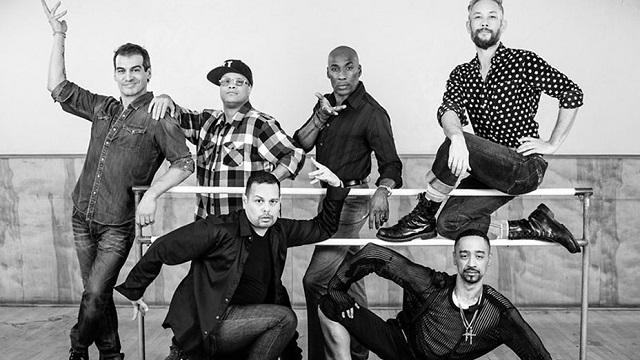Madonna’s 1991 concert film Truth or Dare, was as much about Madonna in her Blonde Ambition tour as it was about the dancers. In an earlier article, I discussed how Madonna’s behind-the-scenes performance in Truth or Dare was staged and phony and a big old reality show for the audience. But, also how the dancers were very real, and the documentary used their sexuality to push a progressive, pro-gay agenda in the face of a media that would rather have gay people in the closet. 1991 was still a time where movie reviews of Truth or Dare expressed shock that she would include images of two men kissing. Being gay was so scandalous, you had to protect your children from it.
The reality is, despite everything, Truth or Dare‘s usage of the dancers’ homosexuality wasn’t all that scandalous. It was rather real. Madonna and her director humanized the gay community by putting faces to it in a movie that would reach millions of fans across the country. From the typical liberal enclaves of New York City to the small towns of Nebraska, everybody knew who Madonna was, would be seeing the movie, and be forced to consider the homosexuality of the dancers who helped put on the show.
By having such a focus on her dancers, Truth or Dare catapulted them into a minor star orbit they may not have been ready for. They were these relatively poor, mostly gay, mostly people of color who weren’t prepared to become gay icons and brief celebrities. The dancers hadn’t been used to getting all the attention, fame, alcohol and drugs that they wanted (especially when hobnobbing it with Madonna). But, what happened next turned out to be brutal. Strike A Pose catches up with the dancers 25 years after the movie, retracing their steps through relationship problems, lawsuits, drug addictions, problems with religion, successful and failed businesses, and even the Madonna lawsuit.
Six of the original dancers – Kevin Stea, Carlton Wilborn, Luis Xtravaganza Camacho, Jose Gutierez Xtravaganza, Salim Gauwloos and Oliver S Crumes III – appear in the film. A seventh, Gabriel Trupin, is represented by his mother after having died due to complications of AIDS. Actually, he and two more dancers had been diagnosed with HIV before the tour had even started. Despite Madonna’s advocacy for HIV research, despite her attending an HIV benefit for Keith Haring, the dancers hadn’t been able to tell Madonna about their diagnosis because of the stigma and fear around it and they needed the work. That dividing line – the line between rich and poor, superstar and backup dancer, straight woman and gay man – is the tension of Strike A Pose. It’s a tension where the dancers struggle to deal with their new reality and spin a life out of it.
After the tour ended, all seven spun out in various directions, taking turns for the better and worse. Some had to deal with the realities of being gay in the 1990s, some tried to turn their cult following into a career (Jose and Luis had a single called Queen’s English), and a few of the dancers even sued Madonna’s company (early reports said the lawsuits were about invasion of privacy; here, they spin it as trying to get money owed through contractual obligations). Gabriel Trupin’s mother is still bitter at Madonna for using Gabriel in the famous kiss, saying “it wasn’t his statement, it was her statement.” Others wonder why their brief flash of fame didn’t spontaneously pan out into long-lasting careers of wealth and luxury.
There’s a big person missing from Strike a Pose: Madonna. After the lawsuit, which she felt was a personal affront after having played house mother to them, she dropped those friendships faster than you could imagine. She doesn’t make an appearance here either. She doesn’t stop by to set the record straight, to give her point of view of their relationships, or to meet with them. She’s just gone. They don’t fit into her life anymore, and she won’t fit into theirs.
Madonna’s uninvolvement is a good thing, because Strike a Pose is already a very clipped movie that runs through everything in a jumbled manner. With a shockingly brief running time of 82 minutes (the original Truth or Dare runs 131 minutes), Strike A Pose is the ultimate DVD extra. 7 people across 25 years is a big enough task as it is, but doing so in 80 minutes causes confusion in the storytelling. By having similar characters with similar story arcs, Strike A Pose becomes a mess of events happening to a collective group of people. Giving each story room to breathe, perhaps by dividing the story into sections to let each dancer tell their separate story, would have helped so much with the documentary. The topic is solid, the footage is good, the characters are real…but the editing really needs another pass or four.
There are so many parallels to be dug out of this doc that they collectively illustrate the pursuit of the fame monster. It’s a commendably effort to dig these stories and see how the dancers have changed along with the world. But, this version needs a hell of a lot of work before it becomes great.
Strike A Pose is apparently touring the USA briefly before it appears on the Logo network on April 6.


